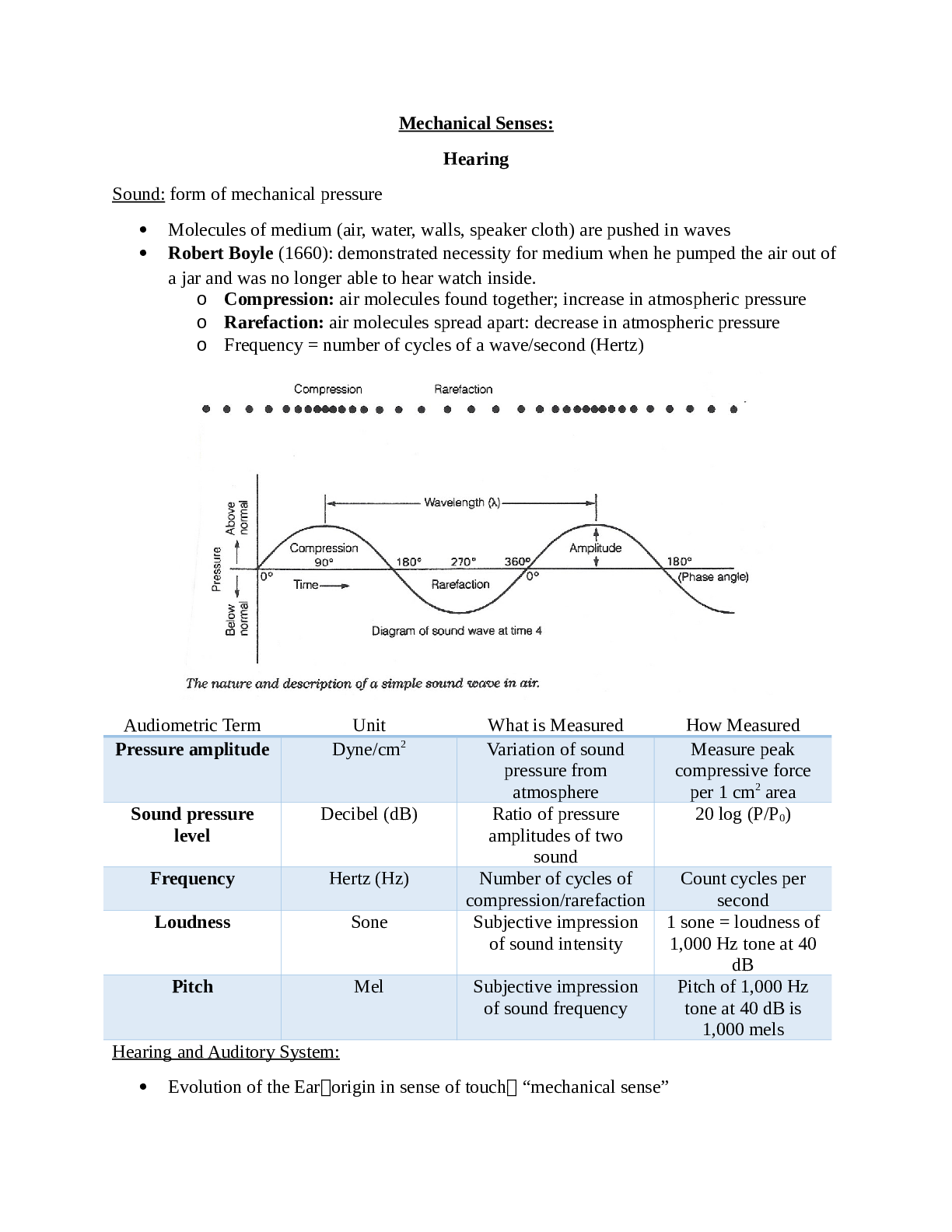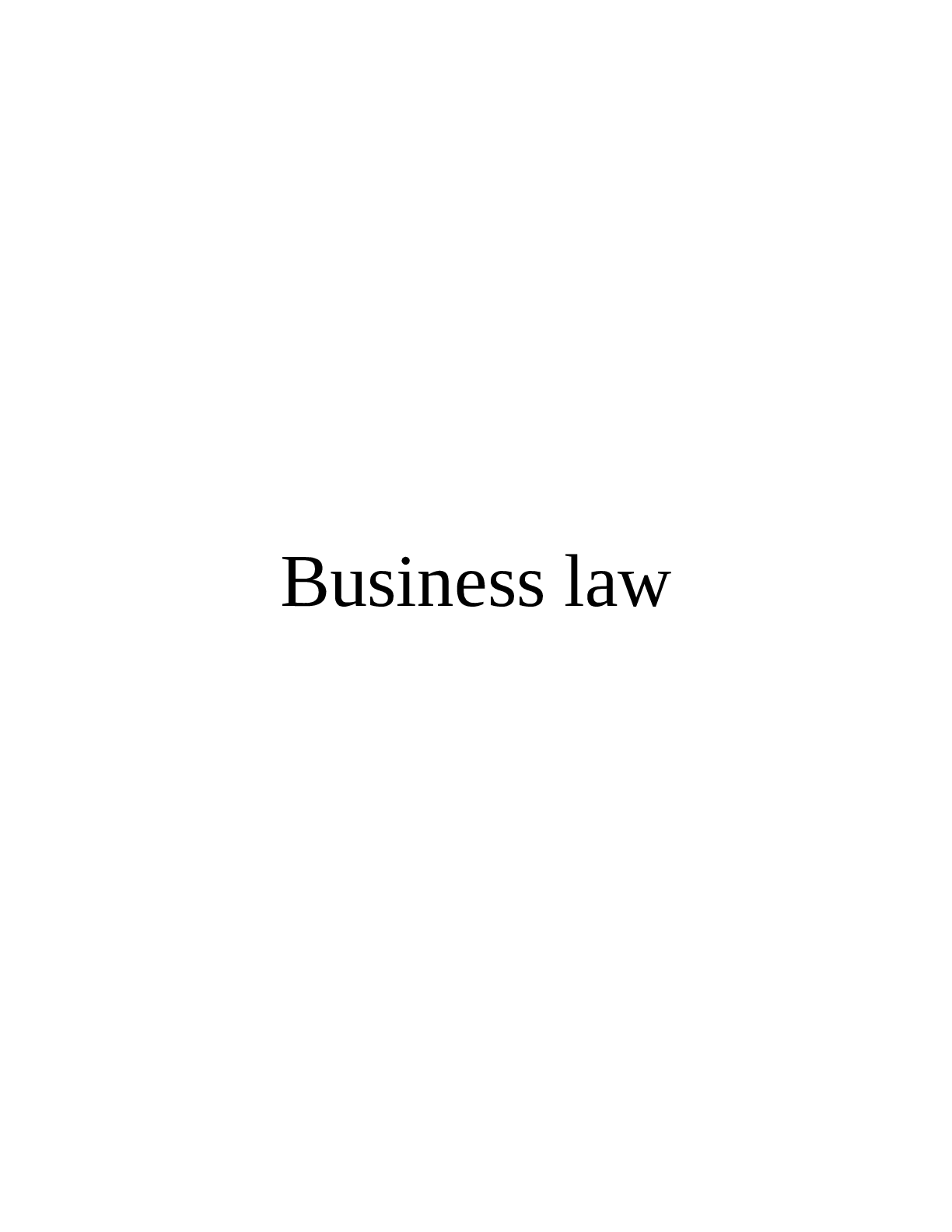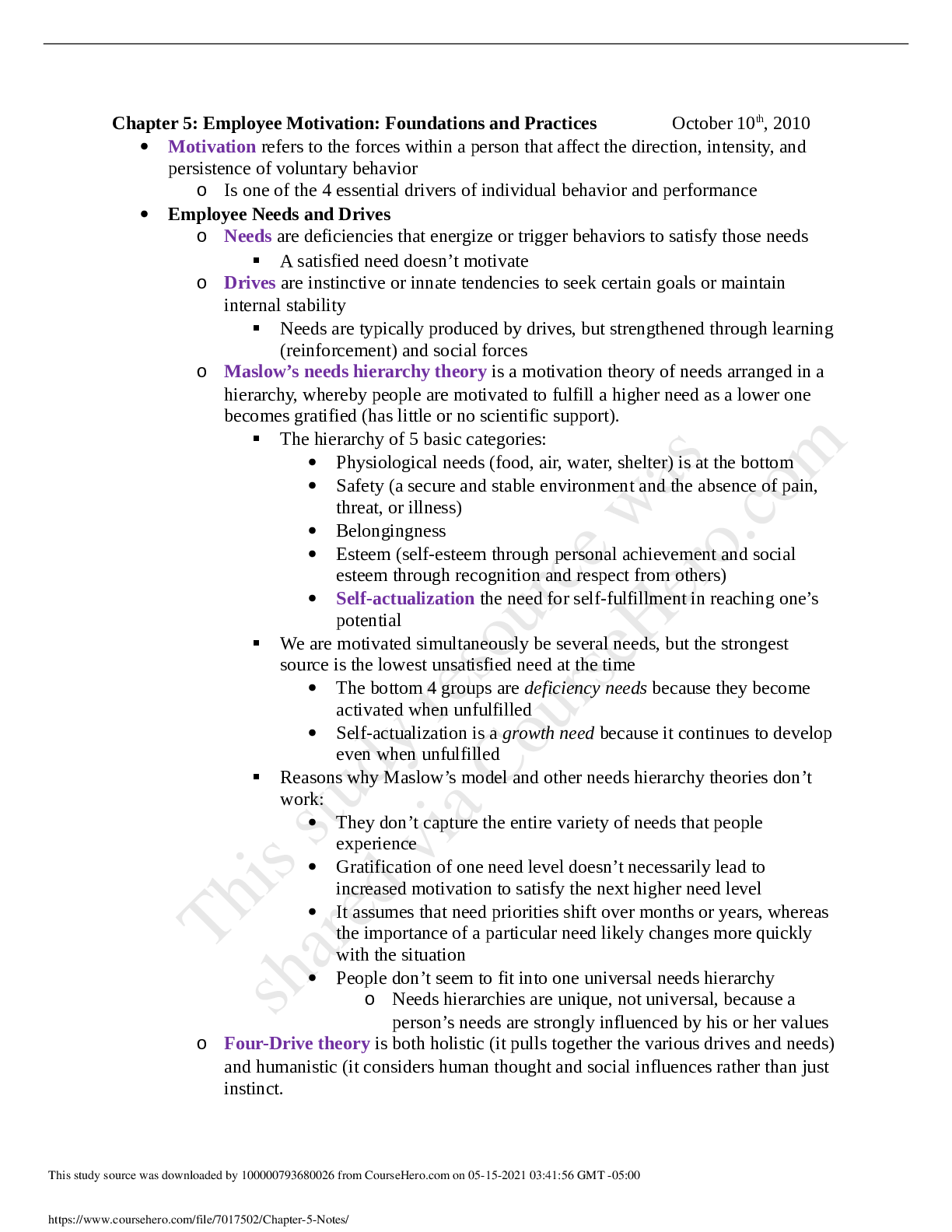Physics > Class Notes > College of Charleston - PSYC 216Exam 3 notes. (All)
College of Charleston - PSYC 216Exam 3 notes.
Document Content and Description Below
Mechanical Senses: Hearing Sound: form of mechanical pressure Molecules of medium (air, water, walls, speaker cloth) are pushed in waves Robert Boyle (1660): demonstrated necessity for med... ium when he pumped the air out of a jar and was no longer able to hear watch inside. o Compression: air molecules found together; increase in atmospheric pressure o Rarefaction: air molecules spread apart: decrease in atmospheric pressure o Frequency = number of cycles of a wave/second (Hertz) Audiometric Term Unit What is Measured How Measured Pressure amplitude Dyne/cm2 Variation of sound pressure from atmosphere Measure peak compressive force per 1 cm2 area Sound pressure level Decibel (dB) Ratio of pressure amplitudes of two sound 20 log (P/P0) Frequency Hertz (Hz) Number of cycles of compression/rarefaction Count cycles per second Loudness Sone Subjective impression of sound intensity 1 sone = loudness of 1,000 Hz tone at 40 dB Pitch Mel Subjective impression of sound frequency Pitch of 1,000 Hz tone at 40 dB is 1,000 mels Hearing and Auditory System: Evolution of the Earorigin in sense of touch “mechanical sense”1. Lateral line organ: horizontal linear array of nerve ending in skin of fish and some amphibians form which protrude jellylike masses in which sensory hairs are embedded. Similar to our “arm hairs” o Respond to vibrations made by prey or predators 2. Labyrinth: part of lateral line evolves looping passages filled with fluid. Passage is lined with hairs that bend when fluid movements are caused by sounds in water outside o Actually sends auditory info to fish’s brain 3. Cochlea: mammals, birds, and crocodilian reptiles have more complex form of labyrinth that adds cochlea. Cochlea contains long membrane covered with sensory cells from which hairs protrude o Mammals differ from birds, reptiles, and fish in t [Show More]
Last updated: 2 years ago
Preview 1 out of 15 pages

Buy this document to get the full access instantly
Instant Download Access after purchase
Buy NowInstant download
We Accept:

Reviews( 0 )
$7.00
Can't find what you want? Try our AI powered Search
Document information
Connected school, study & course
About the document
Uploaded On
Apr 05, 2021
Number of pages
15
Written in
Additional information
This document has been written for:
Uploaded
Apr 05, 2021
Downloads
0
Views
90


.png)







.png)



